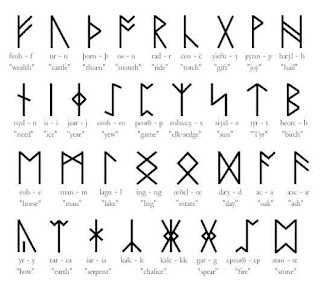Old English, a variant of West Germanic, was spoken by Angles, Saxons, and Jutes. In Ecclesiastical History of the English People (Historia ecclesiastica gentis Anglorum), completed in A.D. 731, the Northumbrian cleric Bede reported that the Germanic settlers of Anglo-Saxon England came from "three very powerful Germanic tribes, the Saxons, the Angles and the Jutes." According to tradition, the Jutes were the first to arrive, in 449. Settling in Britain

The Old English language was comprised of four distinct dialects, including Northumbrian, Mercian, West Saxon, and Kentish. Of these, West Saxon emerged as the dominant dialect, and thus the majority of Old English documents available for study today are written in this dialect. This period of the English language is estimated to have occurred between AD 475 and AD 900, marking the separation of Old English from Old Frisian.
One key feature of Old English is its inflectional and synthetic grammar. Nouns and adjectives are inflected for four cases in the singular and four in the plural, with separate forms for each of the three genders. Nouns are also inflected for number and case, including nominative, genitive, dative, and accusative. Verbs display two tenses through inflection (present and past), three moods (indicative, subjunctive, and imperative), two numbers, and three persons. Adjectives are likewise inflected with both strong and weak declensions.
In vocabulary, Old English was very resourceful in the formation of words by means of prefixes and suffixes. It was possible to form more than a hundred words from the same root. Some of the most commonly employed suffixes were – dom, -end, -ere, -nes, -ung, -scipe to form nouns, and –sun, -wis
Old English was characterized by strong and weak verbs; a dual number for pronouns (for example, a form for we two as well as for we); two different declensions of adjectives; four declensions of nouns; and grammatical distinctions of gender. In Old English phonology, the distinctive features are -- the breaking of front vowels most in the cases, before /x/, /w/, /r/ and consonant, /l/; shortening of Vowels when falling immediately before either three consonances or the combination of two consonants and two additional syllables in the word.
The Old English period is a multi-lingual period – a period with several languages being used simultaneously. Their contact inevitably produced a rich system of communication. Although rich in word-building possibilities, Old English was sparse in vocabulary. To begin with, English interacted with Celtic, the language of the conquered people, itself another branches of Indo European tree. The Celtic influence is not strong and is most evident in place – names: Kent London Cornwall York Aberdeen Dee ”) and Inchcape (“island cape”) that describe geographical features. Outside place names there are no more than about twenty words of Celtic Origin in modern English. Scholars believe that ten common nouns in Old English are of Celtic origin; among these are cart, down, and clock. As against this the Latin influence has been very strong on English, perhaps the most pervasive of all influences. Most Latin words were introduced as a result of the spread of Christianity. Such words included not only ecclesiastical terms—for example, altar, mass, priest, psalm, temple—but also many others of less specialized significance, such as cheese, wine, and street. The third influences are the Scandinavian influence. The Scandinavian plundering raids began, according to the Anglo Saxon Chronicle, in A.D. 787 and continued with interruptions for more than 250 years until from 1014 to 1039 A.D. The Scandinavian influence was through – it extended to matters of grammar and syntax as well. About 40 Scandinavian (Old Norse) words were introduced into Old English by the Norsemen, or Vikings, who invaded Britain
So in a nutshell we can sum up our discussion as :
- Old English (also called Anglo-Saxon) was spoken from the 5th century until the Norman Conquest in 1066, and it is the earliest form of English language that we have written records of.
- Old English is highly inflected, meaning that words change their endings to indicate their grammatical function in a sentence. This is similar to modern-day German or Russian, but much more complex.
- Old English has a complex system of noun declensions (i.e. changing the endings of nouns depending on their role in the sentence). There are five main cases: nominative, accusative, genitive, dative, and instrumental.
- Old English also has a system of adjective declensions, which must agree in case, gender, and number with the noun they modify.
- Old English has a relatively small vocabulary compared to modern English, with many words borrowed from Latin and other European languages, especially after the Norman Conquest.
- Old English is characterized by its heavy use of compound words, which are made by combining two or more words together to create a new meaning. For example, "hēafod-wīc" means "headquarters" (literally "head-dwelling").
- Old English has a complex system of verb conjugation, with different endings for each tense and mood (such as indicative, subjunctive, and imperative). Old English verbs also distinguish between strong and weak conjugations, depending on whether they form their past tense by changing the vowel (strong) or adding a suffix (weak).
- Old English has a variety of different dialects, including West Saxon, Kentish, and Mercian, each with their own distinctive features in terms of pronunciation, vocabulary, and grammar.


Good content
ReplyDeleteVery useful content
ReplyDeleteThanks
DeleteVery resourcefull i say
ReplyDeleteThanks
DeleteVery informative
ReplyDeleteThanks
DeleteThanks a bunch
ReplyDelete